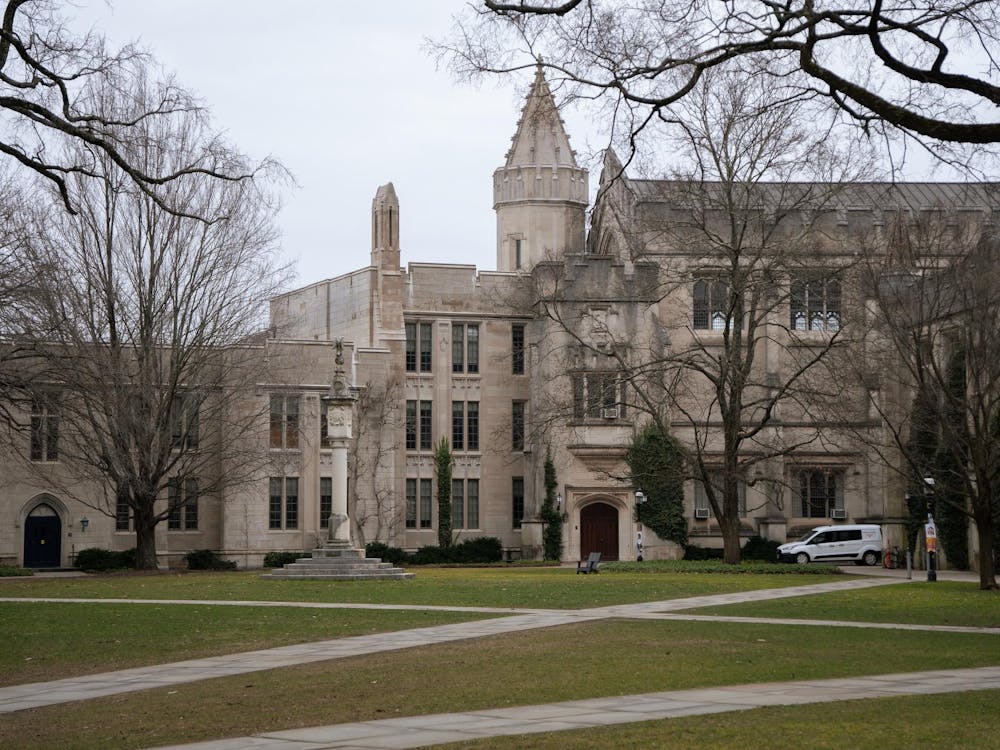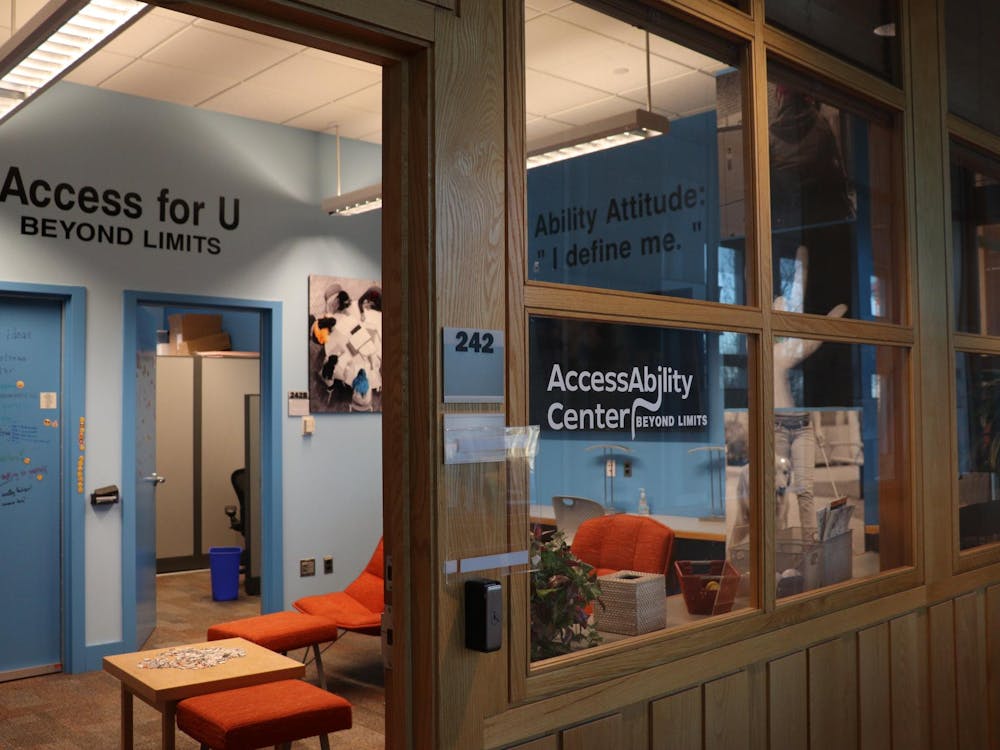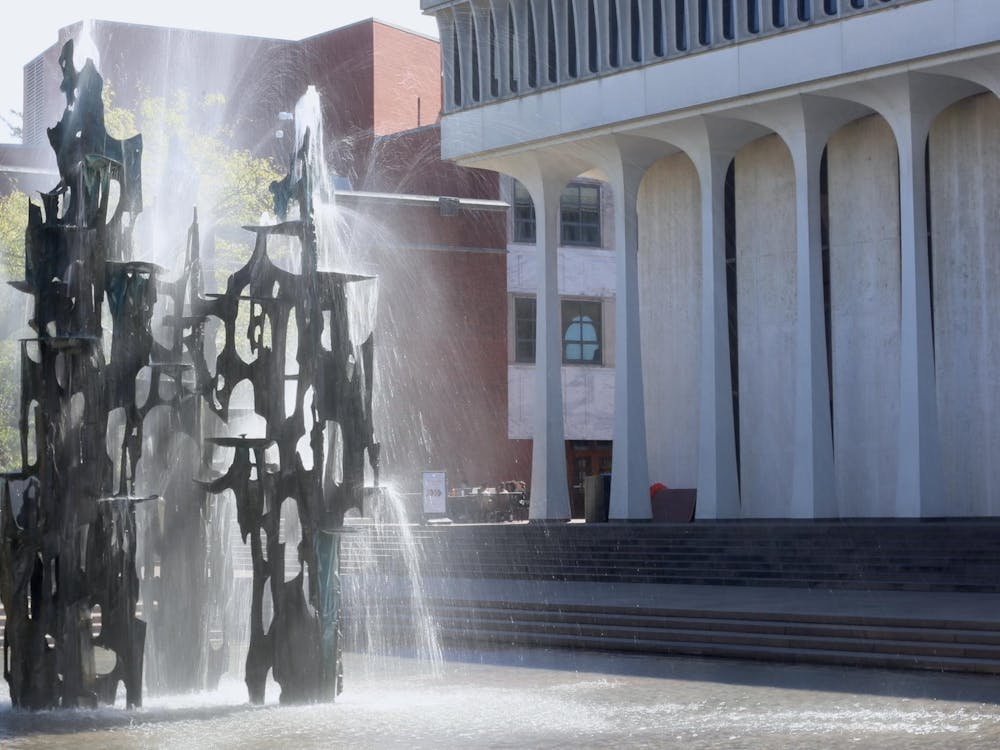Women at the University have faced a multitude of challenges in academicssuch as an underrepresentation in certain disciplines and a clash between their tenures and biological clocks.
In the early years of coeducation at the University, there was also a sense of intimidation of being the only woman in most classes.
Sharing plans and professors with the “sister college”
The academic program at Evelyn College, the University's “sister college,” was set to parallel the University’s program and mandated courses in ancient and modern languages, literature, mathematics, science and other subjects.
Forty-one of Evelyn’s faculty members were professors who also taught identical classes at the University, according to the book “Transforming the Tiger: A Celebration of Undergraduate Women at Princeton University” by Catherine Keyser ’01.Some of these professors includedlogician John Grier Hibben, Class of 1882, mathematician Henry Burchard Fine, Class of 1880, and Woodrow Wilson, Class of 1879.
Nurturing experts in “critical languages”
Susan Craig ’70 said the critical languages students were permitted to take any course in the undergraduate curriculum in which they were interested. For Lynn Nagasako ’70, departmental classes for Japanese linguistics consisted of one-on-one classes with a professor at the Institute for Advanced Study.
Judith-Ann Corrente ’70 said it was extremely uncomfortable to be the only woman in a classroom full of men.
“Forty-five years later, and I still remember how scared I was,” she said. “Making myself go in there was challenging. I was shy, and it was hard because our lives were so public.”
Corrente said that at the beginning, many of her professors assumed that she did not belong.
“Most of [the sexism] was just gossip afterwards, which, you know, was pretty silly,” she said.
However, professors also encouraged critical languages students to speak and to give their opinions in class, Margery Hite ’74 said.

“I think sometimes we felt as though there was a consideration of the girl’s opinion and a guy’s opinion,” she said. “But most of us were quite aware that an opinion was an opinion – it had no gender.”
In-class attitudes towards the ‘co-eds’
Peter Cohen ’70 said women were so rare in classes that they were considered foreign entities.
“Everybody was checking out who was this woman, what did she have to say or was she hot,” he said.
Sara Sill ’73 said that in one of her classes, after discussion, the instructor would ask for the women’s opinion.
“That was a little strange — it wasn’t what you think about it, it was what did the woman in the class think about it,” she said.
Sue Perles ’75 recalled that every day throughout the semester, her chemistry professor would say “good morning gentlemen.”
Marsha Rosenthal ’76 said that in her freshmen Latin class, the professor would greet the men as he was facing the board before turning around to say “and lady.”
“He was trying to be friendly — he was not trying to put me down,” she said. “But it made me want to, you know, hide under the desk.”
Though Rosenthal said that the experience of being in precepts is a true highlight of Princeton,Marjory Smith ’73 said she was a bit intimidated in precepts and did not raise her hand due to internal pressures.
According to a 2011report from the Steering Committee on Undergraduate Women’s Leadership, faculty members noted that often their shyest students in precept were women, and that this lack of participation arising from shynesshurts their academic performance.
According to the report, men tend to speak up more quickly than women, to raise their hands and express their thoughts even before they are fully formulated. Women, on the other hand, may take a bit more time to shape their comments and be more reticent about speaking up.
Award Winners
Since classes with women have graduated through 2014, only nine of the 45 valedictorians and 13 of the 44 Latin salutatorians were women.
In 1975, Cynthia Chase ’75 and Lisa Siegman ’75 became the first female valedictorian and salutatorian of the University respectively.
“I was very focused on what I wanted to say in my valedictorian address,” Chase said about what she felt when awarded the prize.
From 1970 through 2015, 79 students received the Moses Taylor Pyne Honor Prize, the highest general distinction conferred on an undergraduate, and 30 of them were women.
“I was pretty shocked — a bit overwhelmed,” Marsha Levy-Warren ’73, the first woman recipient of the prize, said.
The University has had 72 male and 25 female Rhodes Scholars since the 1970s.
Perles, the first female Rhodes Scholar at the University, said that from her perspective, the scholarship was just a chance to go to graduate school.
“It’s a blend of academics, public service, leadership, athletics and it’s a blend that there’s no one formula for,” she said. “And the applicant pool is spectacular.”
Recruiting female faculty members
There were no tenured femaleprofessors until the 1968 appointment of sociologist Suzanne Keller. Ten years after coeducation, there were only 10 women among 371 tenured faculty in 1979.
While the University was celebrating ten years of coeducation, there was a campaign called “Ten years of women without tenure of women” to increase the number of tenured females at the University,Sally Frank ’80 said.
“We needed the role models, we wanted the courses and we wanted women in the professional positions,” she said.
According to the Steering Committee'sreport, one student noted that female professors were more encouraging, another that they were gentler and a third that they were less likely to say bluntly “No, you’re wrong.”
Rosenthal said it is also important for young men to work with women on the faculty.
“It’s formative for men to be able to exchange ideas with women whom they can look up to and respect,” she said.
University President Emerita Shirley Tilghman said the ease of combining family and work was a big part of the reason she came to the University as a full-time professor of life sciences in 1986.
“Everything is very close,” she said. “I used to say that I lived three minutes from work, three minutes from school, three minutes from the pediatrician, three minutes from the after-school program. And if you are trying to combine family and work, those are huge advantages.”
Dean of the Faculty Deborah Prentice said universities have become much more family-friendly as women’s representation in academia has grown.
“That 4:30 to 7 o’clock slot is still very valuable, but I think there’s been much more effort to move at least some of the activities to noon time so that people with child care responsibilities don’t miss out,” she said, adding that there is more equal treatment of men and women due to increasing awareness of the issue of gender equity.
Prentice noted that one of the most significant challenges to women in academia is the timing of the tenure clock and the biological clock.
“Women’s career crunch comes at the same time that women are supposed to reproduce if they’re ever going to,” she said.
During the 2014-15 academic year, approximately 344 of the 1,175 members of the faculty are women, excluding visiting professors. Of the 344 female faculty members, 198 are tenured,according to thePrinceton Profile,which is a document of statistics published annually by the Office of Communications.
“We’re always working very hard to recruit more female faculty and even in some disciplines to identify more female faculty,” Prentice said. “In some disciplines, the pipelines are still pretty skewed towards men.”
Shedding the ‘STEM stigma’
No women in the Class of 1973 concentrated in economics, physics, astrophysics or chemistry,according to a May 1973article in the Princeton Alumni Weekly magazineentitled “Are Princeton’s Women Afraid of Economics?”
“There weren’t that many [female faculty] in the humanities and social sciences and I’m sure there were fewer then in the sciences,” Marsha Rosenthal ’74 said.
Robert Jahn, professor emeritus of aerospace science and dean emeritus of the School of Engineering and Applied Science, said a certain amount of foresight and courage was required to sign up for the fields of sciences, technology, engineering and mathematics at the University.
He added that women tend to avoid the fields because of their aversion to mathematics since high school. Jahn described this aversion as due to cultural norms and presumptions, not a difference in men and women’s academic potentials for engineering activities.
“[Women shying from STEM] robbed the profession of some very good talents that should have been allowed to manifest themselves and bloom in the industrial world,” he said.
Prentice said the University tries especially hard to recruit female faculty in fields where there aren’t very many women.
“Once you have a gender imbalance, it’s more likely to feed itself than to correct itself,” she said. “And it’s really hard to overcome these things.”
Tilghman said that metrics like time to tenure, tenure rate, salary, space, nomination for prizes and resources for start-up funds were continuously evaluated at the Universityto ensure that female faculty in STEM are being treated fairly, equitably and equally to the male faculty in STEM.
Jahn said that in the early years of his tenure, he took engineering undergraduates into New York, Philadelphia and Washington, D.C., to raise awareness about engineering in secondary schools that had female students ready to apply for undergraduate programs.
“I think that taking the existing undergraduates, including women, into those schools and allowing them to make presentations and go one-on-one with the potential applicants was very productive,” he said.
“The environment at Princeton is not one which causes women to shy away from engineering,” chemical and biological engineering major Lindsey Bergh ’15 said. “So that’s really, really nice.”
Jahn said that during his time as Dean of the School of Engineering and Applied Science, the female strength in the undergraduate body increased from being just one engineer in 1971 to being almost equal to that of the male strength in 1986.
According to theOpening Enrollment statistics,240 undergraduate women, 402 undergraduate men, 149 graduate women and 437 graduate men concentrated in engineering in the 2014-15 academic year.
The Women’s Studies Program
The women’s studies program was established in the eighties after much student rallying for it.
“I was thrilled when the University made the announcement [to install the Women’s Studies program],” Frank said. “It was the only issue I fought on while I was a student that I won while I was a student.”
Frank, who still serves on the advisory committee for the program, said that when the University agreed to begin the program in women’s studies, it went and hired some of the top names and added them to the program. In the interim, various women’s studies courses and some student-initiated seminars became available to interested students.
Levy-Warren said women’s studies courses removed the prevalent feeling of isolation by putting her in a group of female intellectuals.
“We felt that the University needed to acknowledge the long history of women’s participation in intellectual life,” she said of why she engaged in activism for the program.
By the late 1990s, the program was renamed the “Program in Women and Gender Studies,” which changed to the program in “Gender and Sexuality Studies” in 2011.
Levy-Warren said the women’s studies classes and the hiring of more female faculty were evidence that the University cared about the female students and the female students’ place in history.
This article is the second in a four-part Women’s History Month feature series. Check back tomorrow for a look at women in athletics at the University.








